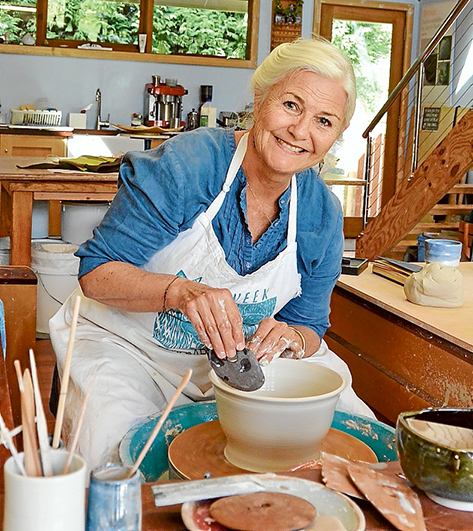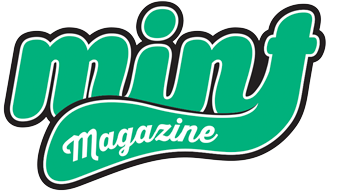By ANDREA LOUISE THOMAS
 Sandi Faulkner works quietly away in her idyllic Mount Martha pottery studio. Over the course of her career, she’s worked with some of the finest masters in the ceramics field from Europe, the UK, Japan and Australia pushing the boundaries of what’s possible with clay, porcelain, heat and glazing. In addition to ceramics she also teaches and practices Sumi-e; the Zen way of the brush, a Japanese technique dating back centuries. ‘It’s the most honest of all art,’ she says and that’s why she loves it. There is only one brush stroke to get it right. No second chances. No corrections.
Sandi Faulkner works quietly away in her idyllic Mount Martha pottery studio. Over the course of her career, she’s worked with some of the finest masters in the ceramics field from Europe, the UK, Japan and Australia pushing the boundaries of what’s possible with clay, porcelain, heat and glazing. In addition to ceramics she also teaches and practices Sumi-e; the Zen way of the brush, a Japanese technique dating back centuries. ‘It’s the most honest of all art,’ she says and that’s why she loves it. There is only one brush stroke to get it right. No second chances. No corrections.
MINT: When and where did your career as an artist begin?
FAULKNER: I studied art and design at Prahran College of the Arts. Ceramics was only a very small section. In my second year I got the opportunity to do an apprenticeship with Viennese master potter Franz Kukowitz of Terra Nigra Studios who had come to Australia to work for five years. Because of my profound deafness, it was easier for me to work with someone one on one so I left school to work with him.
MINT: Why did you choose ceramics?
FAULKNER: Because it is tactile. I love the sensation of the clay. It’s very therapeutic. It’s a kind of magic – it swirls in my hands and becomes something. Now I have a fascination with the flame and the glazing.
MINT: You worked in London with Chelsea Pottery. What did you do there?
FAULKNER: I was making cheese bells for Harrod’s Department stores. Then I was asked to run the Chelsea Pottery Club after hours. They told me a group was coming from Japan to observe and they asked me to demonstrate that same day!
MINT: You have a deep interest in Mingei pottery technique. How did you discover this technique and what drew you to it?
FAULKNER: I studied with Paul Davis who was Head of Ceramics at Monash University before he went to Japan on a fellowship. When he returned he introduced me to Japanese techniques and glazes. Through Chisholm, I studied with him at his Japanese teahouse studio in Red Hill.
MINT: You also practice Sumi-e painting. Where did that come from?
Paul suggested I study with Zen master and Sumi-e painter, André Sollier. I spent six years working with him. I guess that lead to my deep appreciation of mingei. It embraces simplicity, utility and timeless beauty. Mingei and Zen philosophy have informed the aesthetic in both my sumi-e painting and ceramic practice.
MINT: What has been the greatest influence on your practice?
FAULKNER: Initially it was French and Italian Majolica ware. I loved the vibrant colours, but Paul challenged my work to a higher level. Now I am most interested in the chemistry of the glazes. I only work with pure oxides and reduction flame for muted colours. I want to make things that last and are useful. Majolica ware is beautiful, but it’s too soft and it chips.
MINT: If you could chose to work on something you haven’t done yet, what would it be?
FAULKNER: Possibly glass. I spent a lot of time in Venice and I love what they do.
Visit Faulkner’s gorgeous light filled studio at 12 Glenisla Drive, Mount Martha when she opens it to the public as part of the Peninsula Studio Trail’s Open Studio weekends Saturday and Sunday, November 14, 15 and November 21, 22 from 10am to 5pm.
Her work can be viewed online at: sandifaulkner.com


